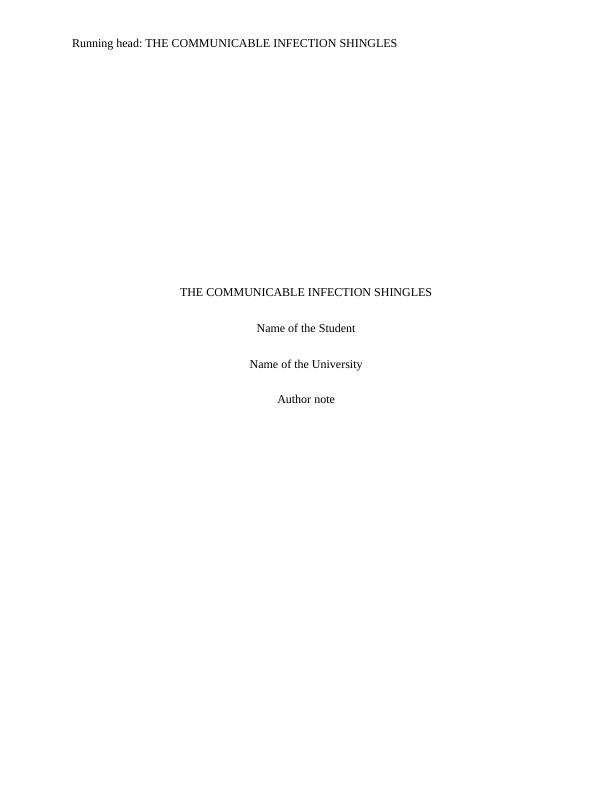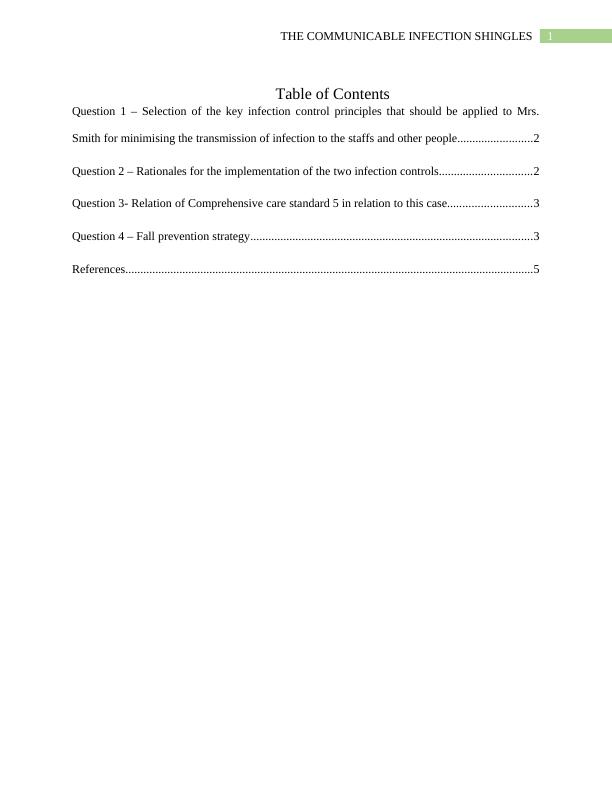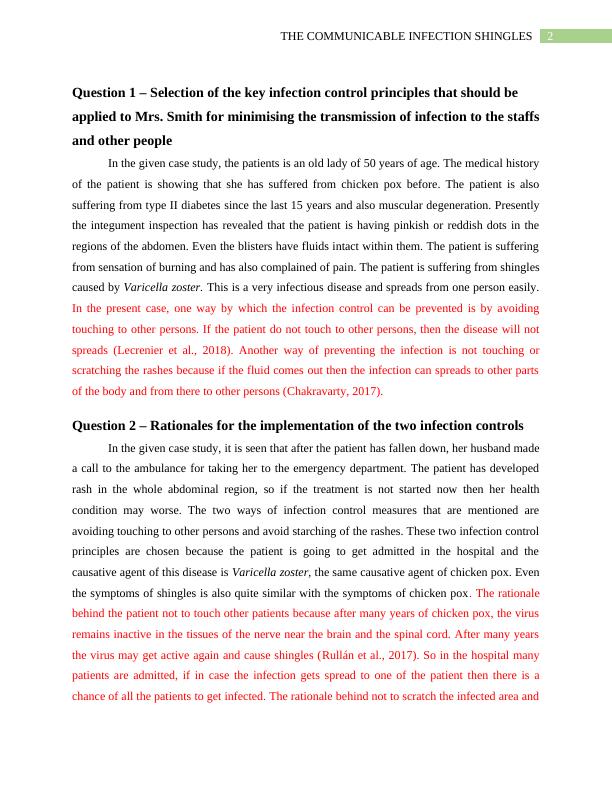The Communicable Infection Shingles
Added on 2023-03-20
6 Pages1664 Words65 Views
End of preview
Want to access all the pages? Upload your documents or become a member.
Chickenpox (Varicella): Causes, Symptoms, and Treatment
|17
|1706
|3
Chicken Pox: Structure, Pathogenicity, Diagnosis and Treatment
|4
|1176
|103
Nursing Assignment (Doc)
|3
|546
|69
Parents’ perception and understanding of Neurofen use in children with Chicken Pox and associated risks
|27
|6691
|65
Infection Control in Healthcare: Risks, Controls, and Procedures
|10
|2285
|479
JOURNAL: EBOLA AND THE PUBLIC HEALTH TRIAD INSTRUCTIONS.
|4
|494
|31



